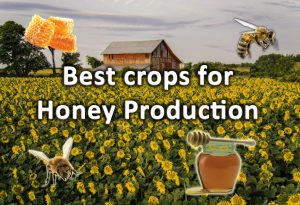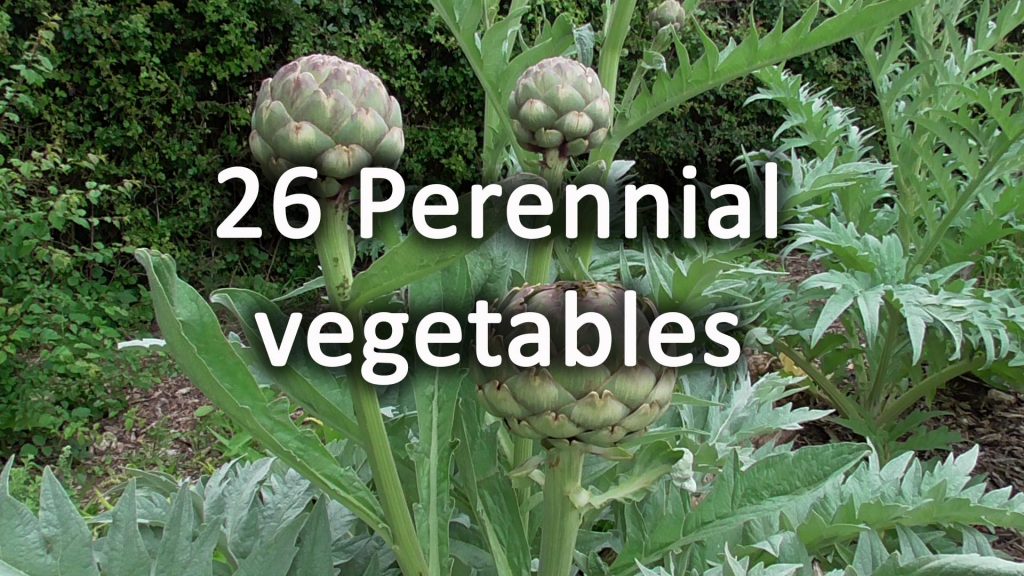Perennial vegetables are those which come up every year without the need for replanting. Once established, perennial vegetables will provide you with a reoccurring crop year after year.
This makes them extremely valuable as there is no sowing or maintenance to establishment. Germinating and raising young, annual vegetables is also an intensive activity.
Young seedlings require regular tending to get them strong enough to plant out. During this time young vegetables can be prone to pests, fungal infections and sudden frosts.
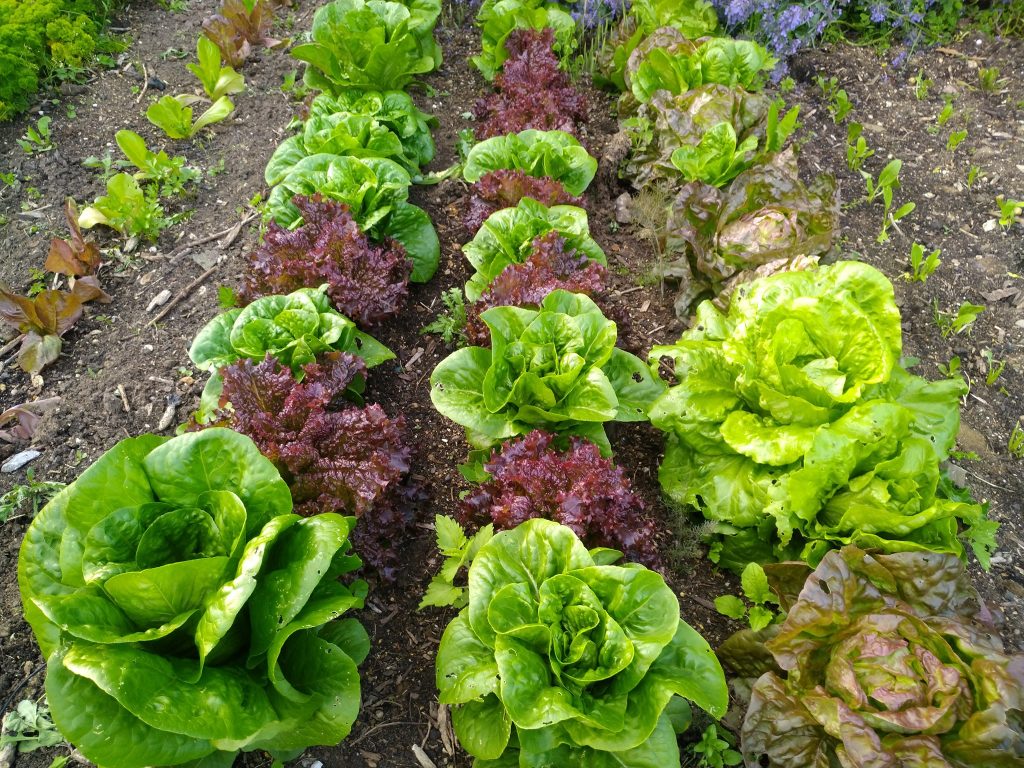
This makes perennial vegetables lucrative especially for the self sufficient homesteader. Once established these reoccurring crops can provide both a reliable and predictable harvest.
Due to an established root system these crops are quick to produce food sometimes very early on in the season. This is particularly beneficial to help bridge the infamous ‘hungry gap’ when there is little else around to harvest. Most of us thick of crops such as Rhubarb and asparagus when we hear the term ‘perennial vegetables’.
However, these useful crops are actually more numerous and diverse than you may think. In this article we have listed 26 perennial vegetables which can handle a whole range of sites, soils and growing conditions.
Some of these may be plants you already know but simply had no idea they were edible. Some are simply vegetables which are more common edible in other parts of the world. All of the examples listed here are suitable for temperate climates. Due to their low maintenance habit all these reoccurring edibles are popular in sustainable practices such as permaculture and agroforestry.
1. Globe artichokes
Globe artichokes are extremely popular and are enjoyed both on pizza and in pastas. These perennial vegetables are not just edible they are also very beautiful. With their light grey, blue, architectural foliage they can be easily also utilised within the flower border.
These are close relatives of the thistle and originally from the Mediterranean. The ripe flower buds are cut and the fleshy inside is thought of as a delicacy. These can be grown from seed or readily divide and sucker from the base. These do prefer a well drained sunny site but I have also managed to grow them in semi shade.
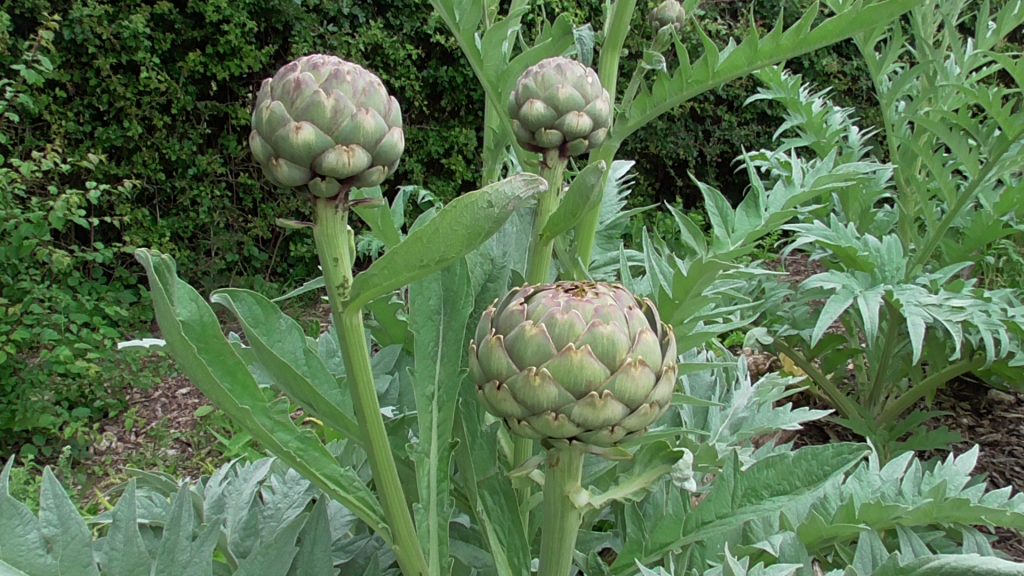
2. Asparagus
No one can deny asparagus is a true luxury crop! Once established, asparagus will come up every year providing you with a glorious, seasonal treat. This vegetable requires a deep, rich and well drained soil and prefers an open, sunny site.
The shoots grow up from a central crown which has a woody centre and long, spider like roots. These crowns can be planted in spring but autumn is best to give them time to establish. Asparagus needs to be left with no harvesting for the first few seasons. This enables the rootstock to build up strength so they throw up thick shoots in subsequent seasons.
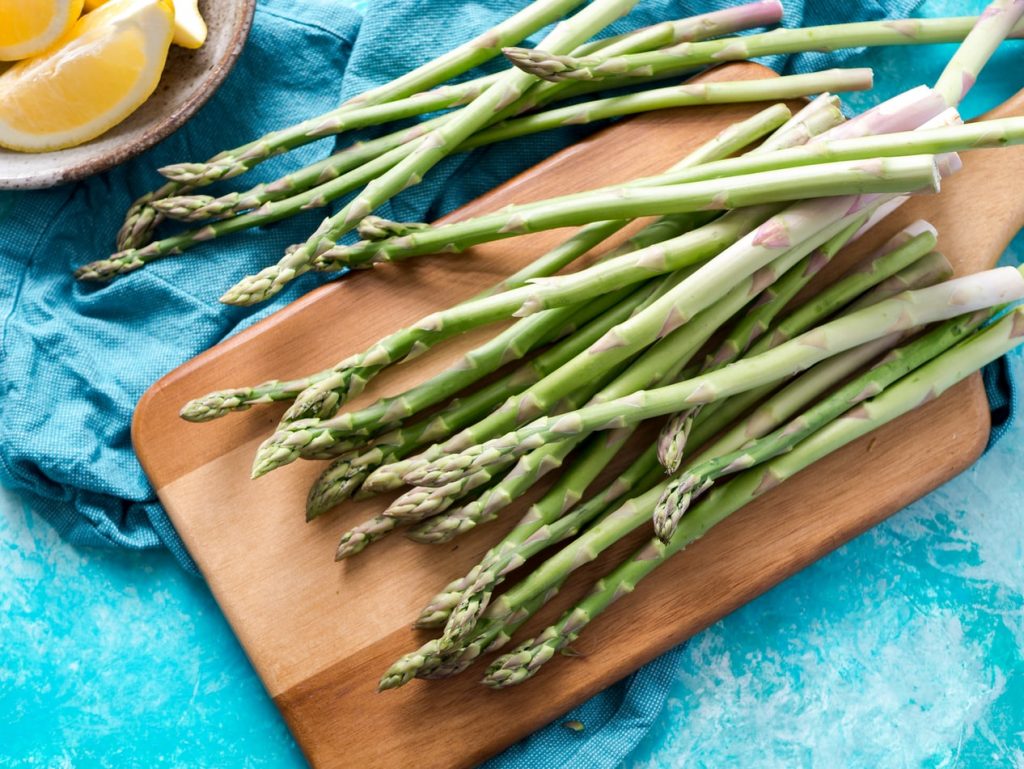
3. Babingtons leek
This extremely hardy and resilient, wild, leek originally comes from the exposed coastlines of the British Isles. This perennial leek once established can slowly spread through a area through the dispersal of its bulbils. These small bulbs develop at the top of the flowering stem in late summer.
When these tall stems fall they disperse the bulbs which easily root in the surface of the soil. These leeks have a pleasant taste somewhere between garlic and leek. Preferring full sun these perennial vegetables will also grow well in the shade. Growing to a diameter of 2cm they are not as large as conventional leeks but require hardly any work.
4. Cardoons
Cardoons are actually the same plant as globe artichokes however these have been selectively bred for their stems. Unlike Globes these have small flowering heads but extremely thick and meaty leaf stems. This drought resistant perennial vegetable is a common agricultural crop in North Africa.
The leaf steams can be steamed, grilled, fried or roasted and very tasty. The stems are usually tied up and blanched with collars to make them more tender. Like Globe artichokes they have architectural foliage and striking blue flowers the bees absolutely love!
5. Daylilies
Daylilies are a perennial plant native to Asia that has beautiful flowers that only last for a single day. Most flowers will open early in the morning only to wither and die during the night. These plants are incredibly hardy and can put up with dry, free draining soils well.
They have long linear, grass like leaves and lily like flowers which are typically yellow or orange. The flowers are edible and have a sweet taste. The most common way to eat daylilies is to treat the flower buds like green beans. The flowers can also be dipped in a light batter and fried.
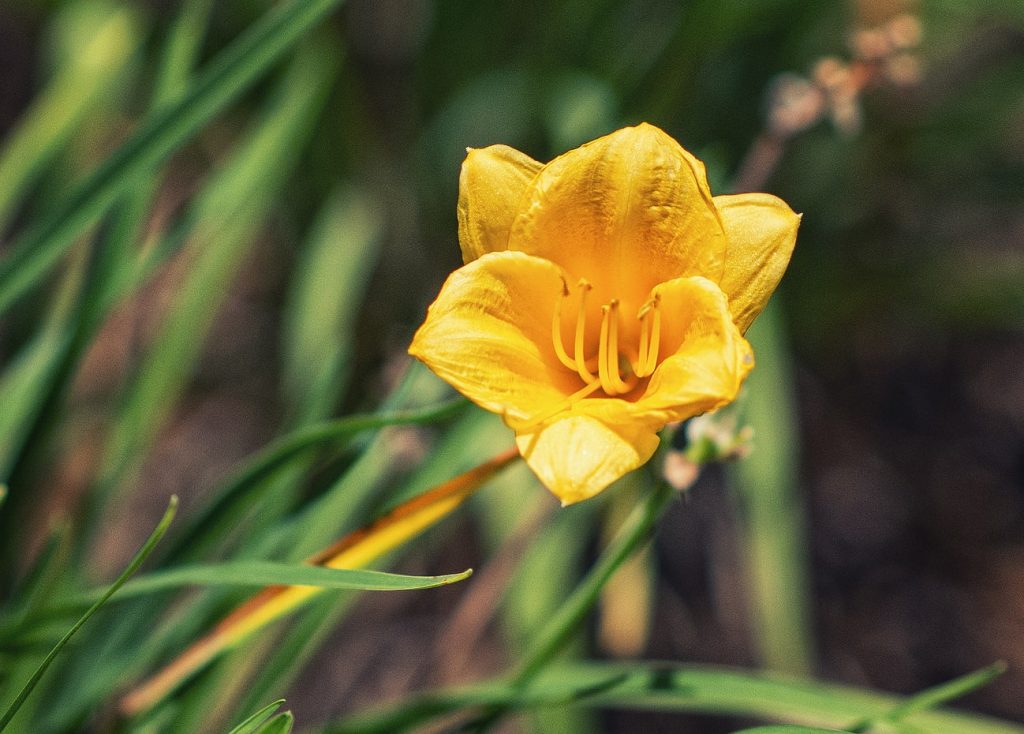
6. Jerusalem Artichokes
Before potatoes came from South America over 300 years ago, Jerusalem Artichokes were a staple tuber crop in Europe. This fantastic perennial vegetable is no relation to globe artichokes but is closely related to the sunflower. Like sunflowers these have tall, vertical foliage which grows over 2 metres tall.
They have small sunflower like flowers but are a robust spreader so it is advised the roots are contained. The plants shoot and grow from thick tubers which readily divide. Generally these are planted in raised beds with rich, free draining soil to produce the largest tubers. These tubers can be skinned and then roasted or boiled up in soups.
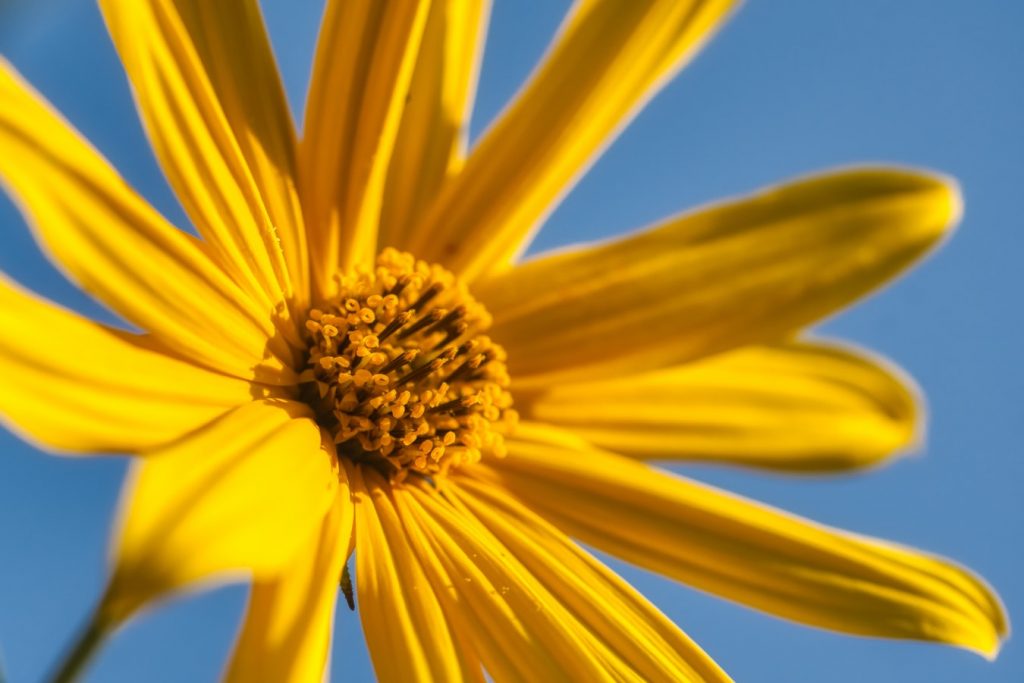
7. Ice plant
More commonly known by its Latin name Sedum, this group of plants is quite diverse. Most sedums with large, fleshy leaves are edible and can be eaten in salads. However it is said some varieties with yellow flowers can provoke stomach upsets if eaten on mass.
A good example of these is Sedum Herbsfrude ‘Autumn Joy’. This perennial shoots up from the base every spring and has beautiful flowers in autumn. Sedums prefer a sunny site but they are extremely drought tolerant making them perfect for free draining soils.
8. Sorrel
Sorrel is a wild, perennial herb which is extremely widespread and tolerant of most conditions. During the growing season it produces multiple, arrow shaped leaves which have a distinctive lemon taste. This perennial has become more and more popular in recent years as it is so productive.
Once established it will burst into life every spring providing early season greens for the kitchen. Sorrel is tolerant of shade making it a preferred choice for food forests and will self seed freely. The tangy lemon taste of the leaves can seriously liven up a salad and perfect for self sufficient homesteading.
9. Good king Henry
Also known as Lincolnshire Spinach, ‘Good King Henry’ is a perennial native to southern Europe. This remarkable vegetable is favoured as a spinach substitute and was very popular in the middle ages. What is favourable about this plant is it can tolerate shady areas making it popular for temperate food forests.
This vegetable can be grown amongst other large, permanent crops such as fruit bushes and orchards. Good king Henry will not produce as much as traditional spinach but is no work once established. If planted as an extensive ground cover this perennial vegetable can keep producing for many years.
10. Rhubarb
A much better known perennial vegetable, Rhubarb is a hardy crop with large attractive leaves and bright red stems. This crop is regularly confused with being a fruit due to its extensive use in crumble deserts. Rhubarb can be grown from seed but is typically planted using shooting sections of root called crowns.
Once established these vegetables can produce for many years but are best lifted and divided every 5 years. Originally from Russia these plants are very cold hardy and can take partial shade. They are also a very effective ground cover plant for flower borders.
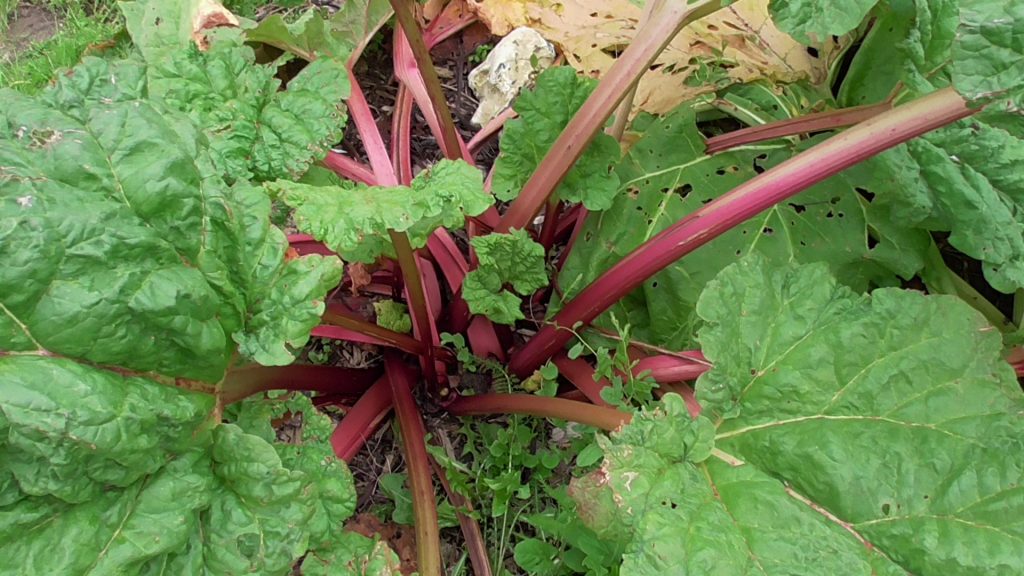
11. Ostrich fern
Also known as Fiddleheads, Ostrich fern has feathery foliage which looks very much like ostrich feathers. This fern is widespread throughout the northern hemisphere and common in deciduous woodlands. The perennial vegetable can be used as an asparagus substitute.
During spring its shoots and young fiddle head looking unopened throngs can be harvested and cooked. This attractive fern can grow over a metre tall and spreads to form small colonies. Being shade tolerant this plant is perfect for food forests, temperate permaculture and self sufficient homesteading.
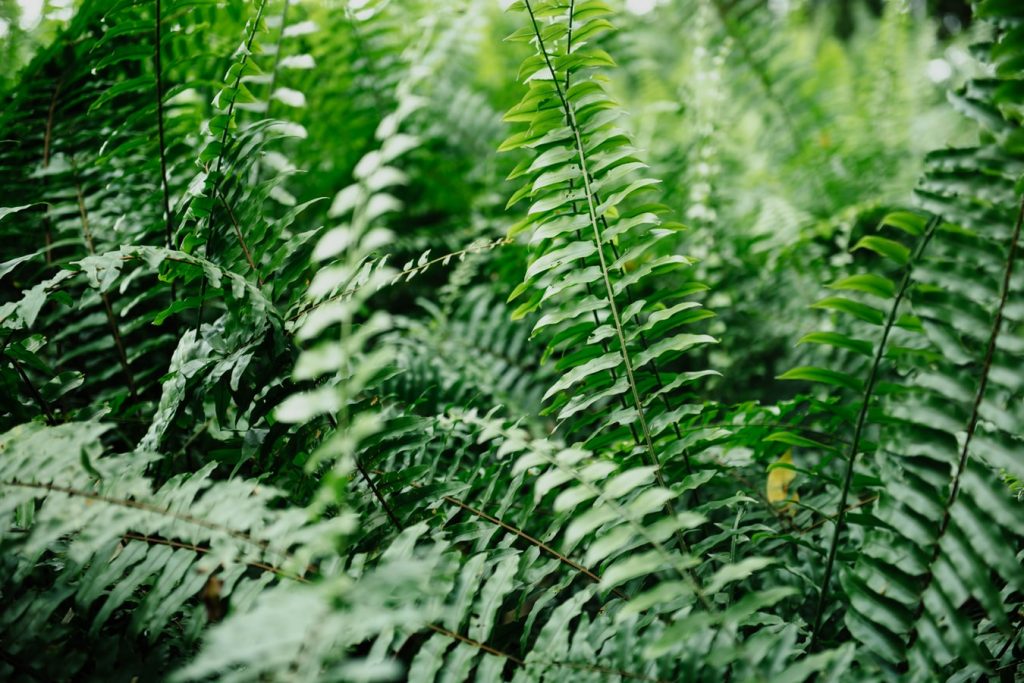
12. Spring onions
Commonly grown as annuals, spring onions can be effectively grown as a perennial crop. If simply planted and not harvested in the first year they will divide and come back every year. In the second season they can crop up to three times in a year, just simply cut down to just above the ground when harvesting.
Every couple of years you can dig up divided bulbs and increase the patch. These perennial spring onion beds do benefit from a seasonal feed and a good mulch to prevent weed establishment. I have successfully done this with the well known variety ‘White Lisbon’ and even harvested some of the larger bulbs.
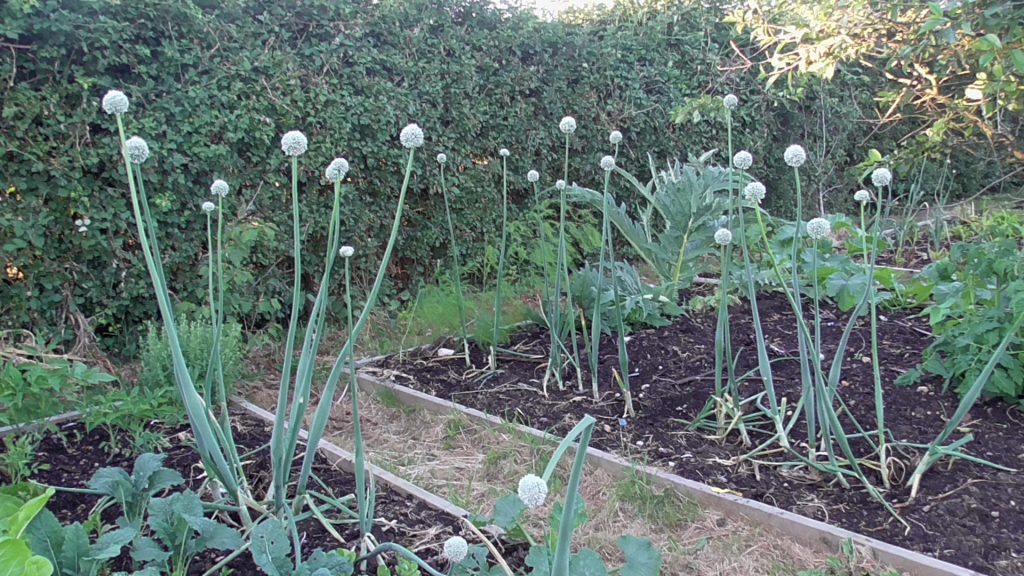
13. Oca
This tuberous, perennial, vegetable is native to the Andes region of South America. This crop was brought to Europe in the 1800s as an alternative to the potato. However Oca’s tubers are not as large as a potato which is probably why they never went into commercial production.
However growing Oca has many benefits especially for the self sufficient homesteader. Both the foliage and the bulbs of this plant are edible and have a lovely lemony flavour. Oca is much less fussy than potatoes and does not need as much intensive care. These small tubers can be mass planted in unused spaces and dug up for a rainy day.
14. Salad burnet
This perennial is native to Europe, Asia and northwest Africa. A member of the rose family, this plant has historically cultivated for its medicinal qualities. However as a food crop this plant has been favourably added to salads.
Preferring to grow on chalky soils it has a cucumber flavour and actually has a slight heat to it. These can be grown on open sunny sites, including flower borders or even wild flower meadows or calcareous grassland. This perennial is extremely tough, and drought tolerant. It is also evergreen meaning it can be harvested all year round.
15. Horse radish
Native to Europe and Western Europe this root vegetable has been widely used as a condiment and spice. It is more familiar as the dominant ingredient of horseradish sauce which is typically eaten with beef.
Horseradish has a hot and pungent flavour which can be very popular in a number of dishes. This deep rooted plant will form dense colonies and can become invasive. It is extremely hardy and tolerant of a wide range of conditions. Very young leaves can also be used in cooking.
16. Ground nut
Also known as the ‘Potato Bean’ the American Groundnut is a tuberous vegetable similar in taste to the potato. Having three times the protein of potatoes these climbing vines are cold hardy and have attractive flowers.
Being a legume the Groundnut also has small edible beans and like other legumes can fix nitrogen. This perennial vegetable originally comes from the forests of Canada and North America. It is now commercially grown in Japan and popular among temperate climate permaculturists.
17. Seakale
Seakale is a wild, maritime plant native to coastal regions of Europe. This perennial vegetable was first cultivated in the 18th century. All parts of the plant are edible and shoots up from the base every year like asparagus. Its leaves are regularly harvested like cabbage and kale and its young flowers can be eaten like broccoli.
Due to its native growing environment this plant can take extremely challenging conditions. From extreme gales to excessive moisture to drought seakale is a true survivalist. It will take some initial care to get it established but give it an sunny open site and it will reward you year after year.
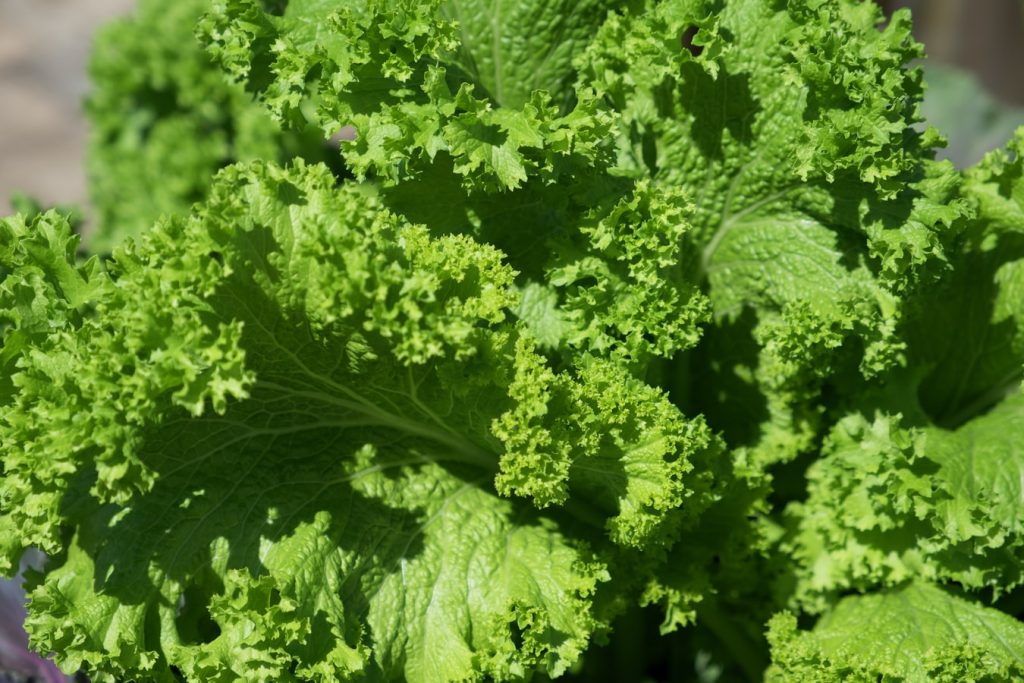
18. Chard
Chard is usually thought of as an annual although it is a biennial it can be managed as a perennial! Traditionally this plant will produce for a couple of seasons before it bolts and is discarded. However, if you continually cut out the flowering stems it can be managed as a perennial for a few seasons.
If you go down this route you will need to feed every spring and except a smaller harvest every year. Keeping chard in this way will ensure very early spring crops and also winter greens. Chard is extremely versatile providing edible leaves and crunchy stalks which are great in stir-fry’s.
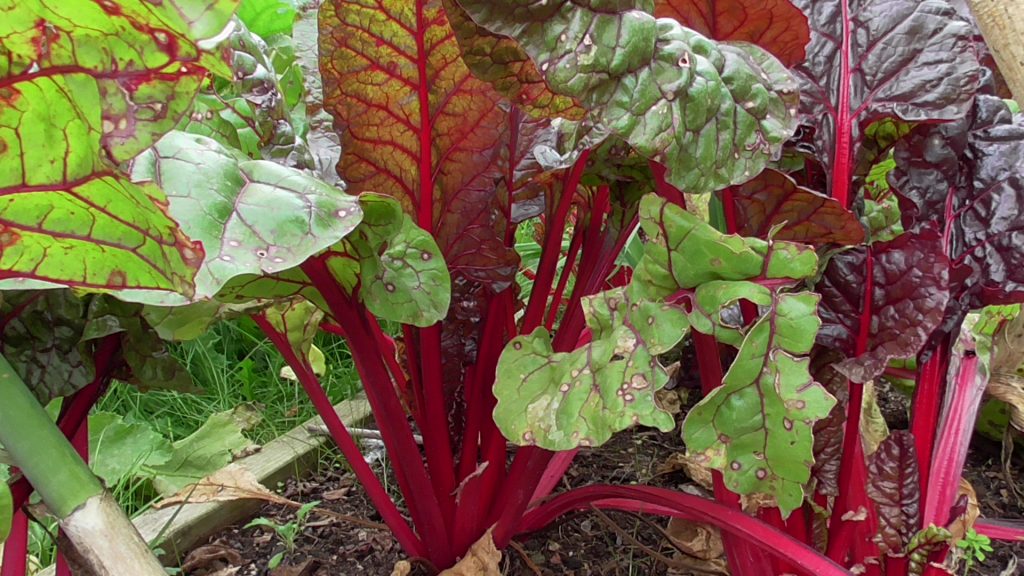
19. Wild celery
Wild celery is the original wild plant which both celery and celeriac have been selectively bred from. It has a preference for moisture retentive, sunny conditions but can also take part shade. Wild celery is a much darker colour than its cultivated cousin and has a stronger flavour.
However in the correct conditions it can produce a consistent perennial food crop with almost no care or attention. It will self seed freely and is effective in open sunny food forests. It is best to have a few of these perennial vegetables and lightly crop each one every harvest. Their stalks and leaves can be used very much in the same way as conventional celery.
20. Purple sprouting broccoli
Purple sprouting Broccoli is taller and more slender than traditional broccoli. This long season vegetable is often thought of an annual but is really a biennial that can be a perennial. Very much like chard it can be cut back to encourage fresh growth which can be harvested for a few seasons.
However there are specific perennial varieties that can grow and produce for a number of seasons. These vegetables can produce tasty crops early in the winter and during the hungry gap. Preferring deep, rich and alkali soils this is a much welcome crop for homesteaders.
21. Hosta Montana
Hosta Montana is a wide ranging type of Hosta which originates from the cool forests of Japan. These extremely attractive perennials sprout up from their bulbs which divide in clumps. Hosta’s have large oval leaves which pick up the dabbled sunlight of woodland conditions. This makes them ideal for a shady spot, edible border or foot forest system.
In July these plants will reward you with attractive, large, bluebell like, flowers. These are best harvested as an asparagus crop when the spear like, leaf shoots sprout in April. This can provide a welcome, early season crop before much else is available. These will need slug control of some sort as slugs and snails love eating them too!
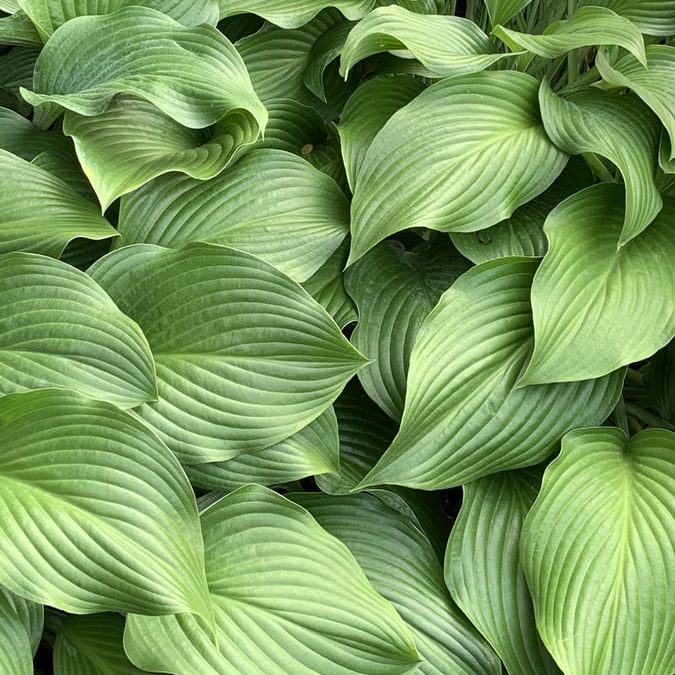
22. Wasabi
Wasabi is a marginal plant which originates from the mountain river valleys of Japan. Most of the time however it is only recognised for its taste and heat in Sushi recipes. However Wasabi is also a very effective perennial vegetable. The leaves and stalks are fantastic for oriental salads and stir-fry’s which can be harvested in early spring.
Wasabi is not the easiest plant to grow but if given lots of humidity and rich soil it should thrive. After a couple of years you can then harvest the rhizome which can be grated into a hot paste. This perennial will grow in moist shade but like hostas slugs absolutely love them.
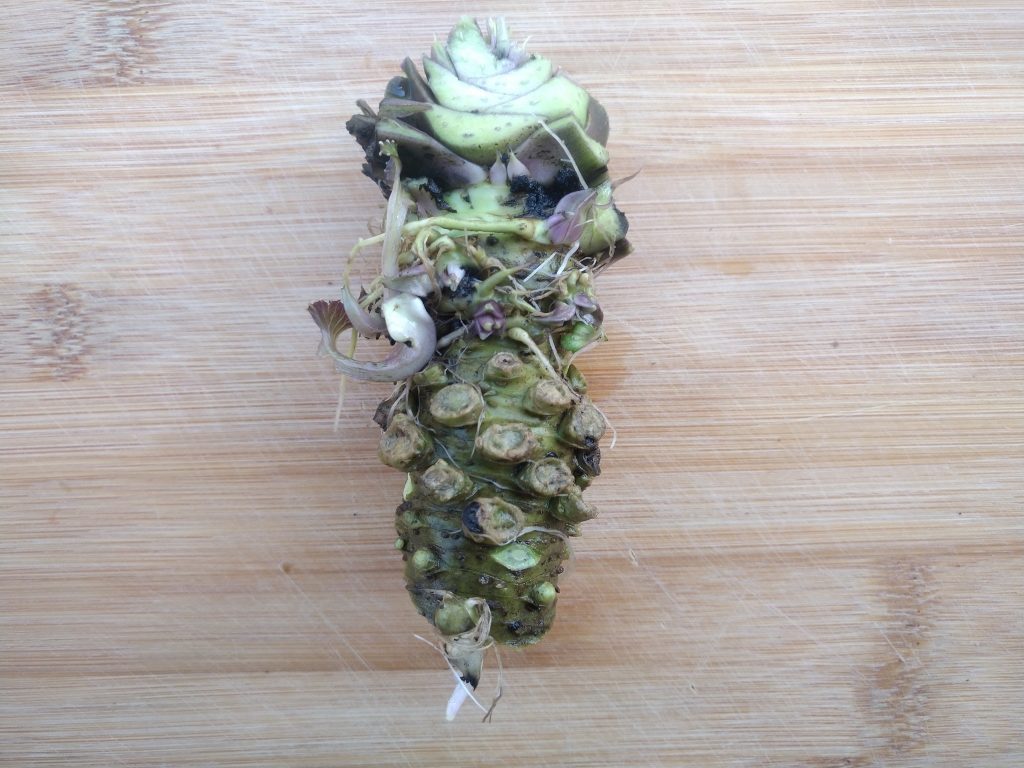
23. Turkish rocket
Turkish Rocket is a wild plant in the brassaca family originating from the Caucasus region and western Turkey. Its opening flower clusters can be harvested as a broccoli crop but all parts of the plant are edible. It has a deep root system that once established is extremely resistant to drought and extreme weather.
This perennial vegetable can then be propagated by seed or root cuttings with ease. Once established it can be difficult to eradicate so its position should be considered carefully. Give this plant a sunny position and it is generally not too fussy about much else, it is also very resistant to pests and browsers.
24. Japanese burdock
Japanese Burdock is a widespread perennial wild plant native to Europe and Asia. It is however more commonly cultivated and eaten in Japan. Used as a root vegetable it has a very long tap root which can be prepared in a number of ways.
One of the most preferred cooking methods is in stir-frys but can also be eaten in salads and stews. This perennial vegetable benefits from a well worked soil rich in nitrogen but is generally very tolerant. With numerous health benefits it can simply be established on waste ground as an emergency food source.
25. Chinese yam
Chinese Yam is a climbing vine which grows up to 5 metres in length. Native to China and East Asia this vines tuber is widely favoured for its edible tuber. The yams themselves are thought to have numerous medicinal qualities. Some of these include treating; dry coughs, diarrhoea, poor appetite and asthma.
Medicinal uses aside this yam is also famous for being delicious and is tolerant of most growing conditions. It is best to plant in a loose, deep soil where it is easy to harvest the long, vertical, yams.
This delicate vine has aerial tubers or ‘bulbils’ which are also edible that can easily be rooted and propagated on. This perennial also has attractive, heart shaped leaves and purple ‘morning glory’ like flowers.
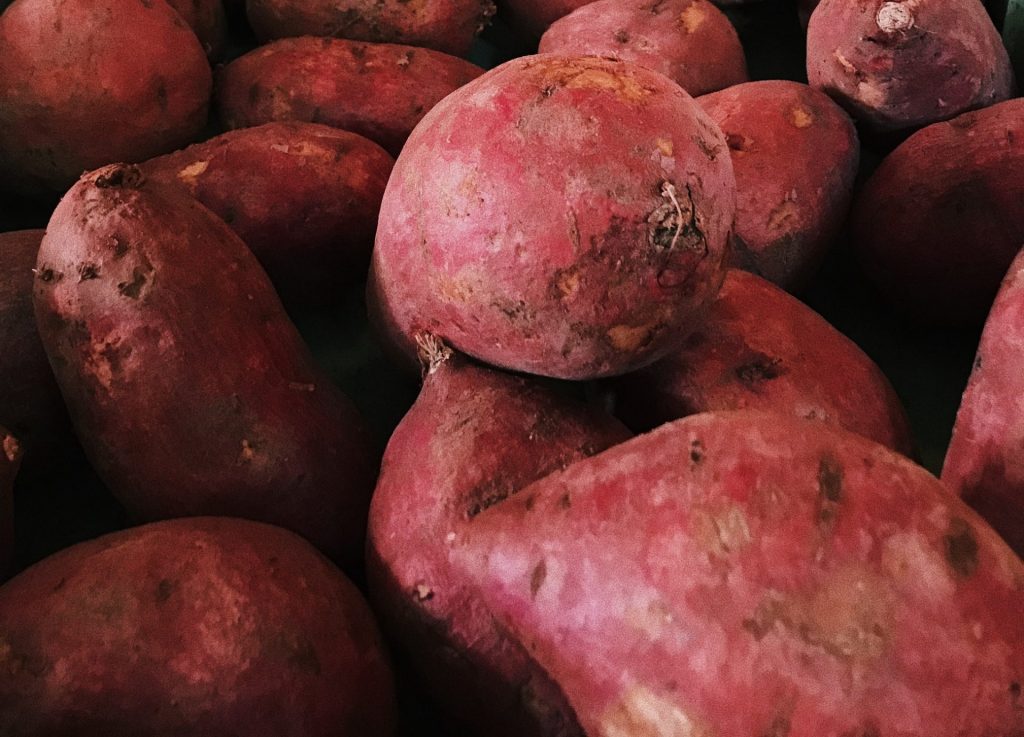
26. Mashua
Mashua is a perennial vegetable native to mountainous regions of South America. It is favoured for its edible tubers which have a strong flavour. It is said to be an aphrodisiac and is extremely resistant to pests, bacterial or fungal infections.
Well known in its native range it is planted next to potato crops to reduce pests. This climbing plant is very closely related to common, garden, nasturtiums and has very similar foliage. This leads to the fact the plant is very beautiful with very colourful trumpet like flowers.
Consequently Mashua would not look out of place in a flower border or growing over a garden pergola. It has a very robust growing nature and is happy in temperate climates. The bulbs are frost tender so should be protected and are best eaten roasted.
Back to home

How Self Sufficiency and Homesteading can stop Climate Change
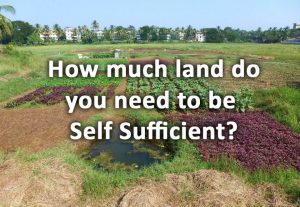
How much land do you need to be self sufficient?
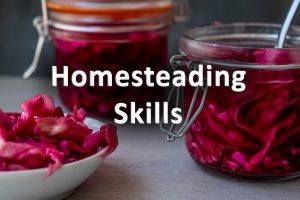
Homesteading skills, for Self Sufficiency
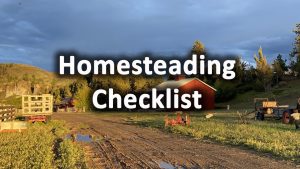
Homesteading Checklist for self sufficiency

A beginner’s guide to self sufficiency & its benefits
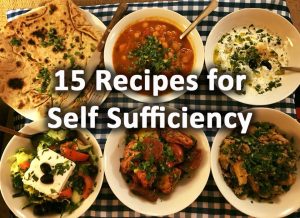
15 recipes for self sufficiency
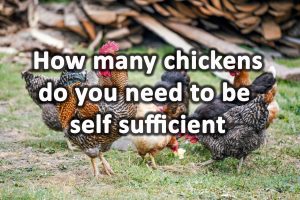
How many chickens do you need to be self sufficient?
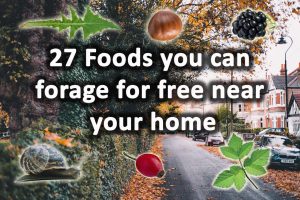
27 foods you can forage for free near your home
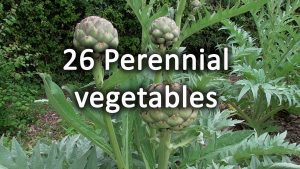
26 Perennial vegetables for the garden

Self sufficient homes

31 Homesteading projects

15 Ways to Store Food without Electricity
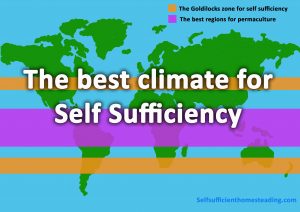
The best Climate for self sufficiency
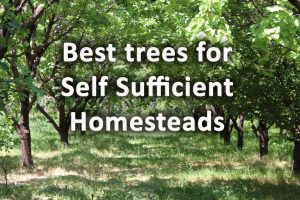
The most useful 22 Trees for a self sufficiency & homesteading
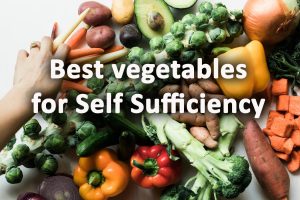
31 Vegetables for self sufficiency

What animals do you need to be self sufficient?

How to stop Climate Change with Crops – Crops for climate change
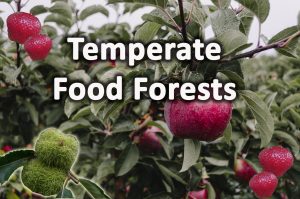
Temperate Food forests
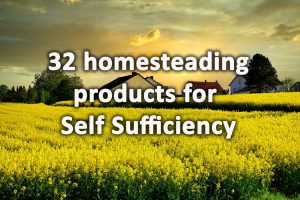
32 Homesteading products for self sufficiency

10 Ways to Sustainably Heat Your Home

10 Ways self sufficient homesteading can be good for your health
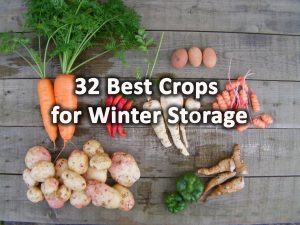
32 Best Crops for Winter Storage
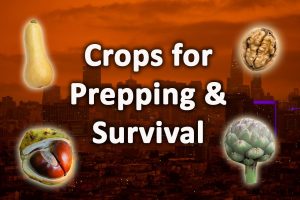
34 crops for prepping and survival
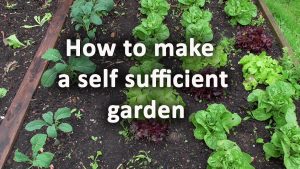
How to make a self sufficient garden
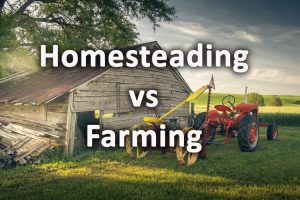
Homesteading verses farming what’s the difference?
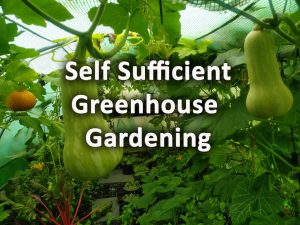
Self sufficient greenhouse gardening
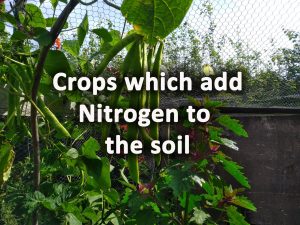
12 Crops which add nitrogen to the soil
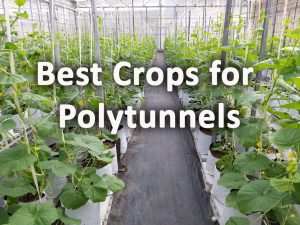
32 of the best crops for Polytunnels
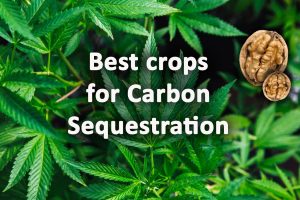
12 Best Crops for Carbon Sequestration
